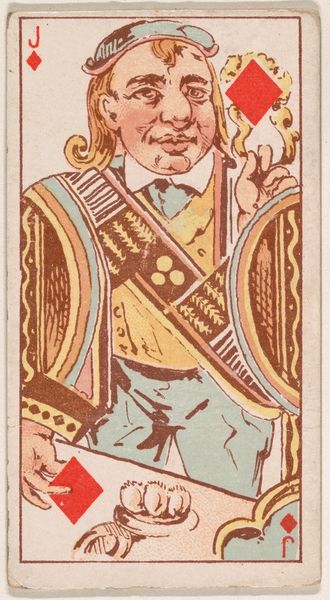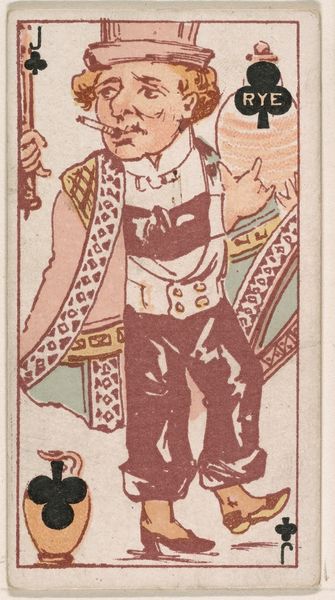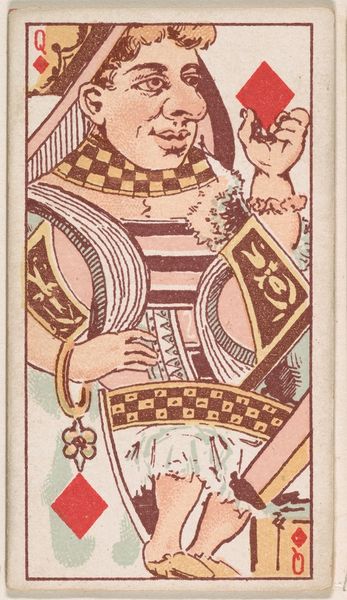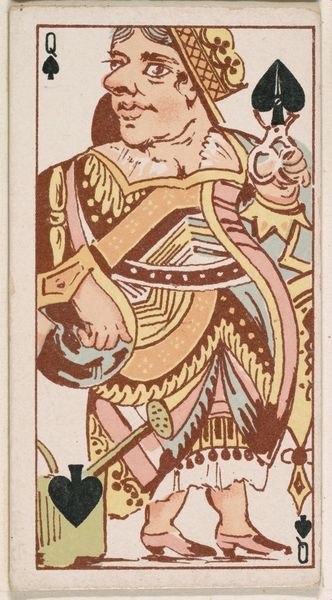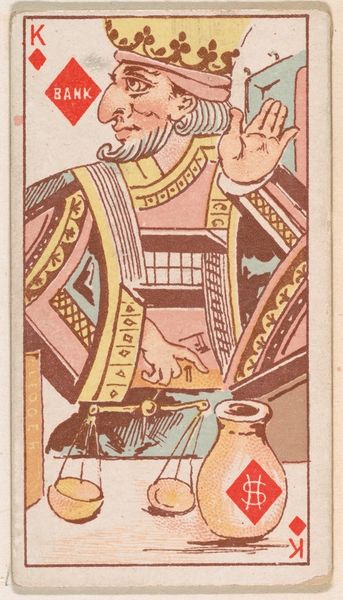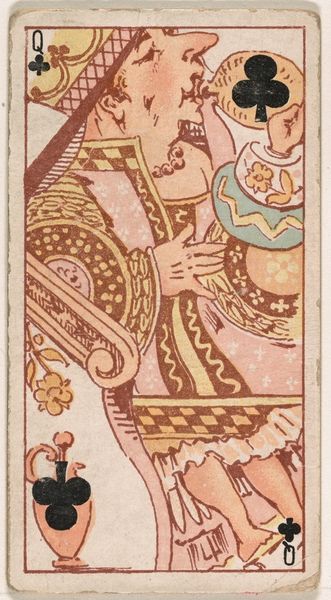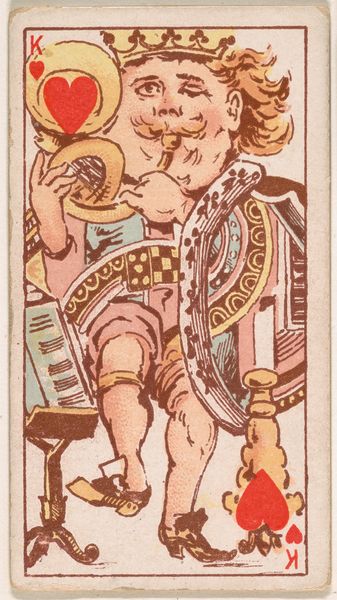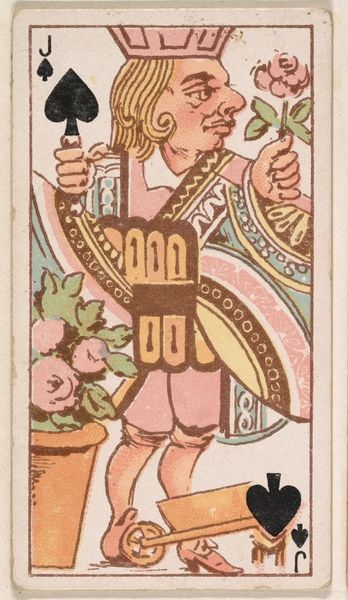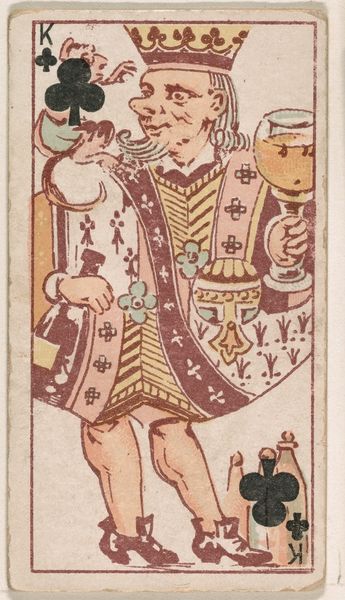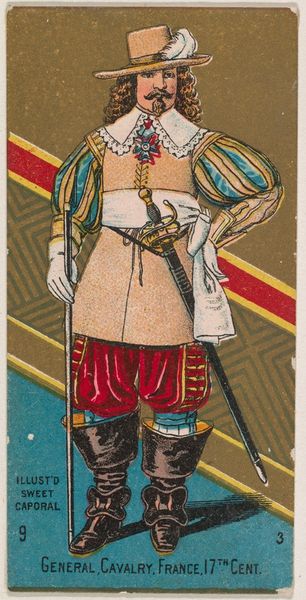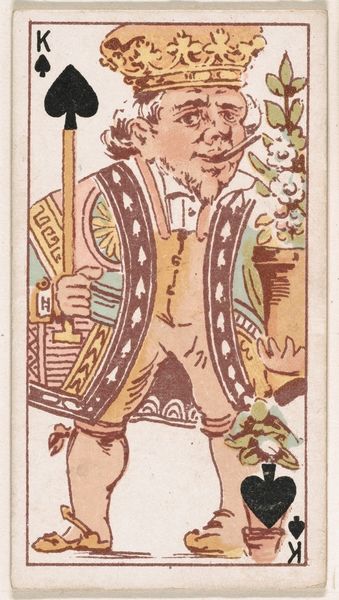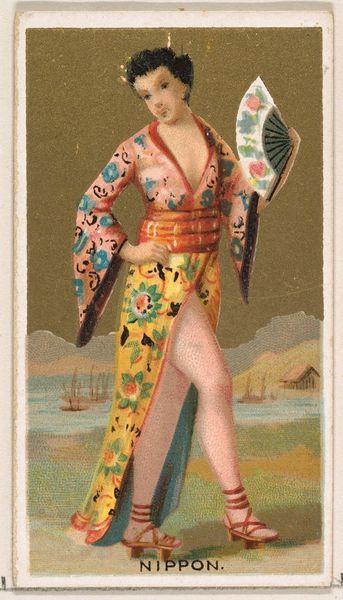
Queen of Hearts, from Harlequin Cards, 2nd Series (N220) issued by Kinney Bros. 1889
0:00
0:00
Dimensions: Sheet: 2 3/4 × 1 1/2 in. (7 × 3.8 cm)
Copyright: Public Domain
Editor: Here we have "Queen of Hearts," a print made in 1889 by Kinney Brothers Tobacco Company as part of their Harlequin Cards series. The medium looks like a lithograph with simple drawing. There's a cartoony feeling to it – the Queen's features are so exaggerated. What jumps out at you when you look at it? Curator: Immediately, I'm drawn to the means of production here. This wasn't meant for a museum; it was advertising, plain and simple. Think about the socio-economic context: tobacco cards, distributed with cigarettes. It highlights the burgeoning consumer culture and mass production of the late 19th century, catering to a broad, consuming public. Who was making these images and for whom? Editor: That’s interesting! So it’s not just the image itself, but how it was made and circulated that matters. I was focusing on the visual style. Curator: Exactly! We have to think about the laborers involved, the printers, the designers. Were they considered artists, or were they simply workers fulfilling a commercial task? Also, the materials - cheap paper, mass-produced inks - contribute to the artwork’s meaning as much as the caricature itself. Were these intended to be disposable? Recycled? What does the relatively low cost of the material signify for the purpose? Editor: I see what you mean. The 'disposability' kind of shifts how you understand its value as an art object. Curator: Precisely. By examining the materiality and production of something seemingly trivial, we gain insight into broader historical trends in labor, consumption, and value systems of the era. Editor: This has totally changed my perspective! I now look at it more than just an image. The materials and the production are so crucial to understanding it. Curator: Yes, and hopefully, by considering its original use, we're moving beyond simply appreciating aesthetic qualities and getting closer to its real cultural impact.
Comments
No comments
Be the first to comment and join the conversation on the ultimate creative platform.
